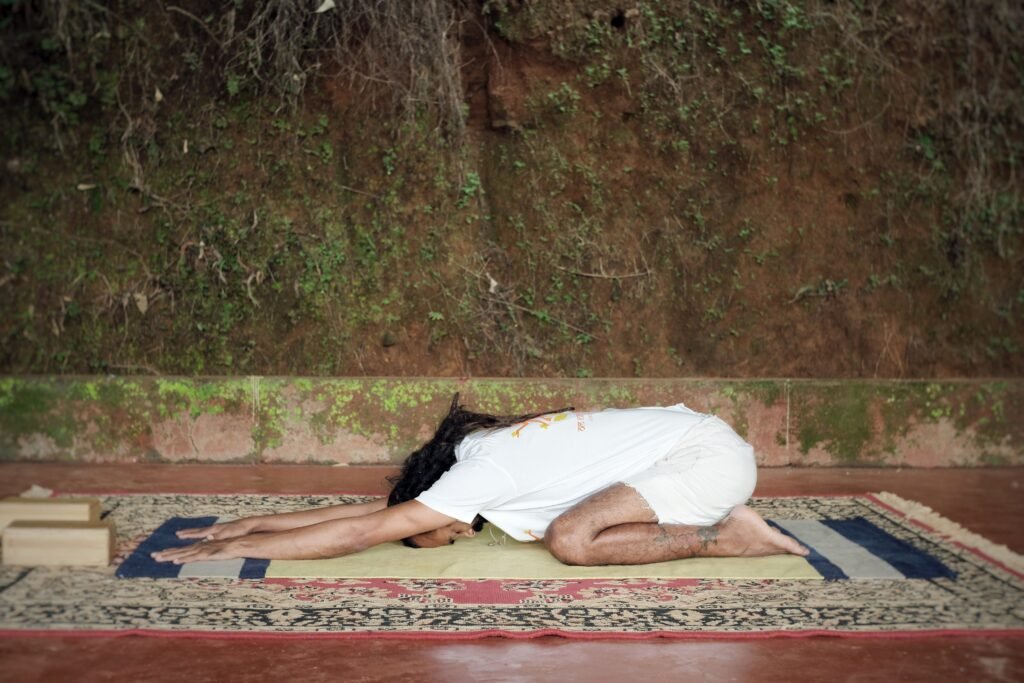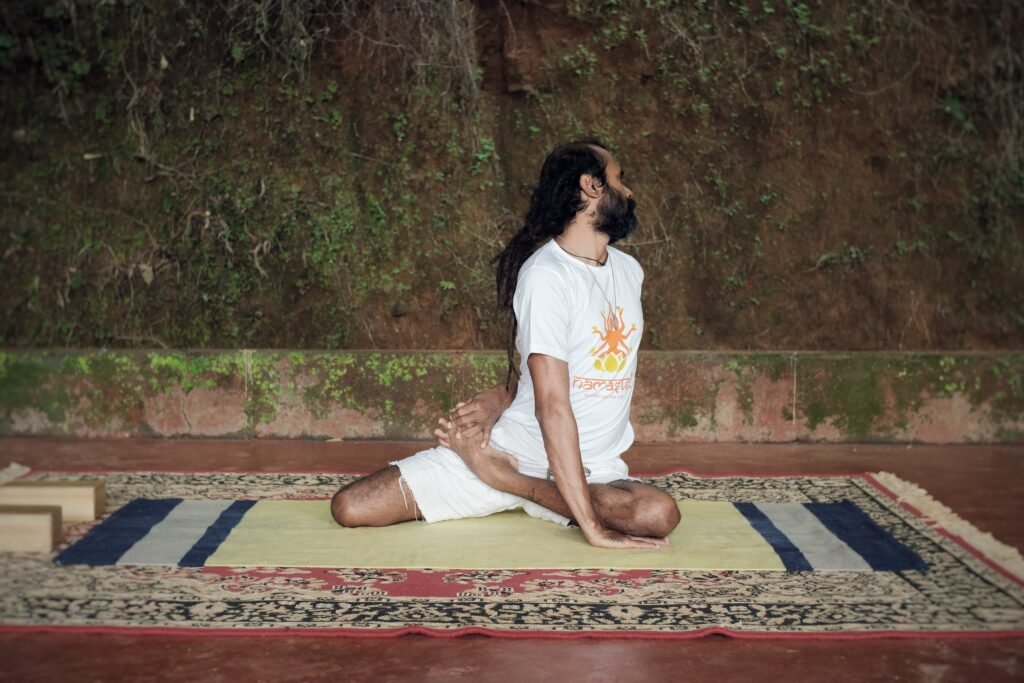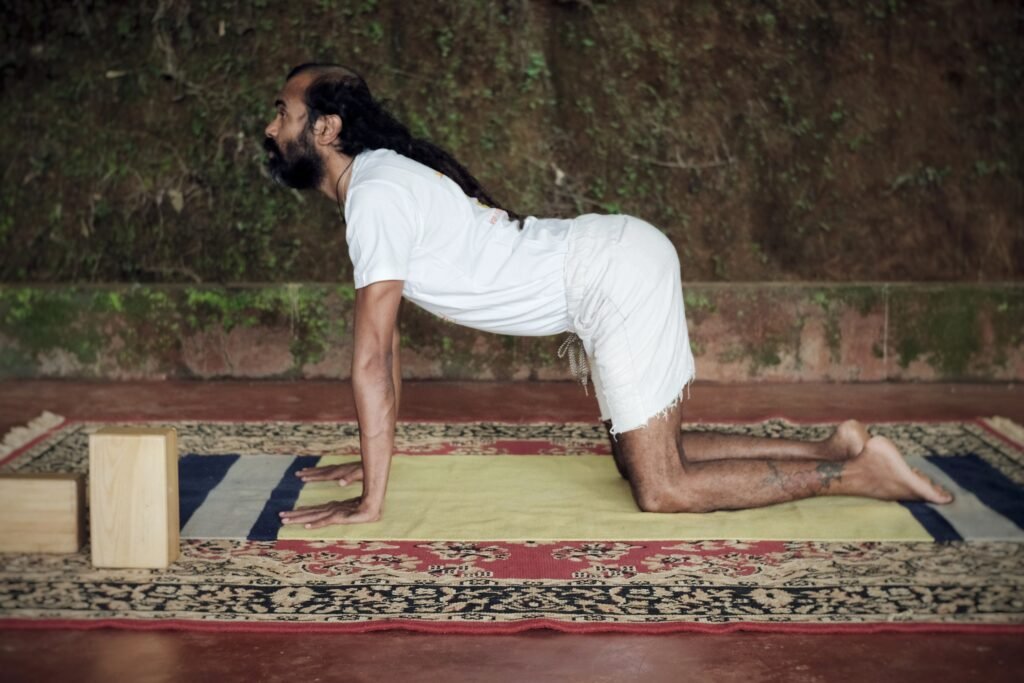Lower back pain can affect every aspect of life, including your ability to walk, exercise, and sleep.
When you have lower back pain, you probably want to stay in bed because of the aches and, frequently, crippling soreness that it causes.
But according to research, performing strength, aerobic, and stretching exercises twice to three times per week can help prevent and reduce lower back pain.
Although stretching cannot treat all back pain, strengthening and loosening the muscles in your legs and hips can sometimes help people with lower back pain find relief. It can be especially beneficial for low back pain because it strengthens the muscles that support the back and spine, including the transverse abdominis in the abdomen, which also supports the spine and the paraspinal muscles, which help you bend your spine.
Your body is encouraged to build defences against the causes of back pain, which include weak abdominal and pelvic muscles and a lack of hip flexibility, by yoga’s emphasis on balance and steadiness.
By improving your posture and strengthening these muscles, you can lessen the strain on your back, which will alleviate the pain you experience.
Stretching also improves flexibility by allowing more blood to reach contracted muscles.
Yoga also has advantages that go beyond physical health. By reducing stress and easing anxiety and depression, slow, deliberate breathing and movements can help with the emotional side of back pain.
Remember that your low back frequently needs the bends, twists, and stretches of yoga, so don’t be afraid to try it.
People can safely stretch and strengthen their tense, sore back muscles by mindfully practising yoga.

-
-
Child’s Pose
-
This classic yoga position helps to ease discomfort and stress in your spine, neck, and shoulders by gradually stretching your gluteus maximus, thigh muscles, and spinal extensors.
Your body’s soothing response also aids in releasing tight lower back muscles, enhancing flexibility and blood flow along the spine.
- Sink back through the hips to rest them on heels while on your hands and knees on the ground.
- Fold forward, hinge at the hips, and extend the hands in front of you.
- Your thighs must support your belly.
- With your palms facing up, extend the arms in front of or next to your body.
- Concentrate on taking deep breaths and relaxing any stiff or tense muscles.
- Maintain this posture.
-
-
Knee-to-Chest stretch
-
Stretching from the knees to the chest is particularly helpful for persons with low back discomfort. This stretch tries to alleviate discomfort by reducing pressure on the spine.
With frequent practice, this knees-to-chest stretch can improve hip stability and low back flexibility.
The Knee to Chest stretch will also be quite helpful for people who work at a desk all day and have tension in their lower back.
Try performing this stretch every night to keep your low back and hip muscles in good shape.
- Your feet must lie flat on the floor as you lay on your back with both knees bent.
- Maintain a bent left knee or place it straight out on the floor.
- Bring your right knee to the chest by mounting your hands behind your right thigh or at the top of your shinbone.
- Avoid elevating your hips and lengthening your spine to your tailbone.
- Release any stress by taking a big breath.
- For 30 to 60 seconds, maintain this pose.

-
-
Seated Spinal Twist
-
This traditional spinal twist thoroughly extends the outer hips while cleansing the entire spine.
One must focus on twisting from a long spine to perform this posture as well as possible.
- Sit on the ground with your legs out in front.
- Place your foot outside your right thigh as you bend your left knee.
- Your left thigh must be on the outside of your right arm.
- For support, put the left hand behind you.
- Twist to the left, beginning at the base of your spine.
- Maintain this pose for up to 60 seconds.
- On the opposite side, repeat.
-
-
Pelvic Tilt
-
Exercises called pelvic tilts, which include extremely small spinal movements, are used to tone the abdominal muscles that support the low back. They feel amazing since they offer your back a small massage, making them an excellent first workout for people looking for low back pain alleviation.
Pelvic tilts help you strengthen your abdominal muscles, which helps ease lower back tension and pain. They are also helpful for your hamstrings and glutes.
- Bend your legs at the knee and feet flat on the floor as you lay on your back.
- As you press your back firmly onto the floor, contract your abdominal muscles.
- Hold this position for up to 10 seconds while breathing normally.
- To relax, let go and take a few deep breaths.
- Perform 1 to 3 sets of 3 to 5 reps.

-
-
Cat-Cow
-
For a good reason, the Cat-Cow Stretch (Chakravakasana) is a fundamental yoga pose. It entails changing the spine’s rounded (flexed) posture to one that is arched (extension). This is a short vinyasa since each movement is performed in tandem with either an inhalation or an exhale of the breath (linking breath to movement).
Cat-Cow is a terrific technique to stretch your chest, shoulders, and neck while waking up your spine.
- Assume the tabletop pose by getting on your knees (hands and knees on the ground).
- As you breathe, look up, hold onto your hands and ankles, and let your tummy fill with air.
- Exhale as you bring your chin to the chest and bend your spine upward.
- Keep moving in this manner, moving with each breath.
- Spend a minute or two doing this.
-
-
Sphinx stretch
-
You may be both energetic and calm while doing the sphinx stretch, which is a gentle backbend. Your spine, buttocks, and chest are stretched and strengthened by this baby backbend.
- Your hands should be out in front, palms down, and your elbows should be tucked under your shoulders as you lay on your stomach.
- Your feet should be slightly apart.
- As you lift your head and chest, gently tighten your thighs, buttocks, and lower back.
- Breathe deeply while maintaining abdominal and lower back strength.
- Put your pelvis on the ground.
- Straighten your gaze or gently shut your eyes.
- For 30 to 60 seconds, maintain this posture.
Although stretching cannot treat all back pain, strengthening and loosening the muscles in your legs and hips can sometimes assist those with lower back pain find relief.
The benefit of moderate stretching is that you may perform it even while you’re in pain, and it frequently brings about the quickest alleviation.
If done properly, lower back stretches can eliminate the pain millions of you (about 70–85% of the world’s population) experience.
The greatest lower back stretches can also help you avoid damage if you combine them with strength training exercises, but because the area is so delicate, just like with exercises for sciatica, you need to know exactly what you’re doing to avoid aggravating the situation.
